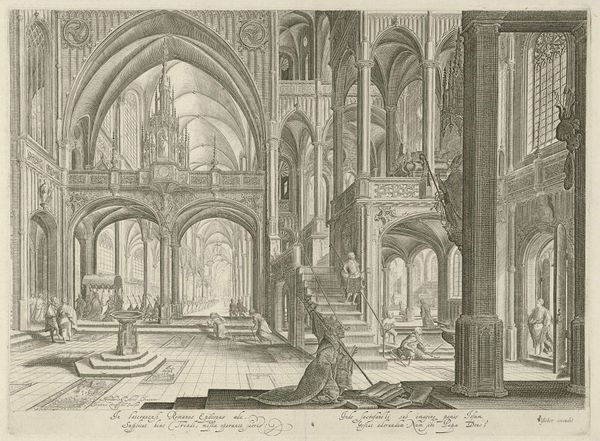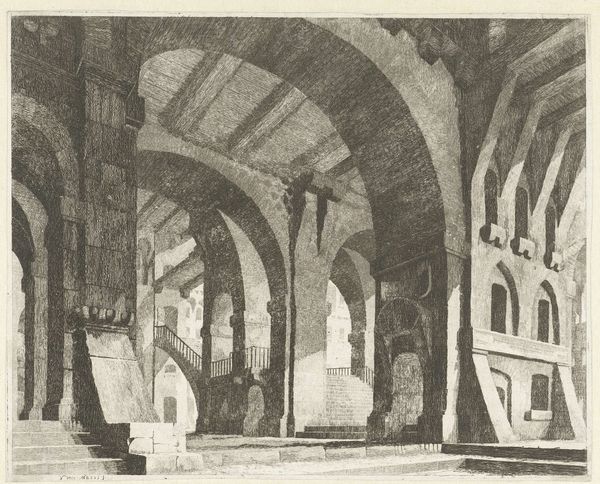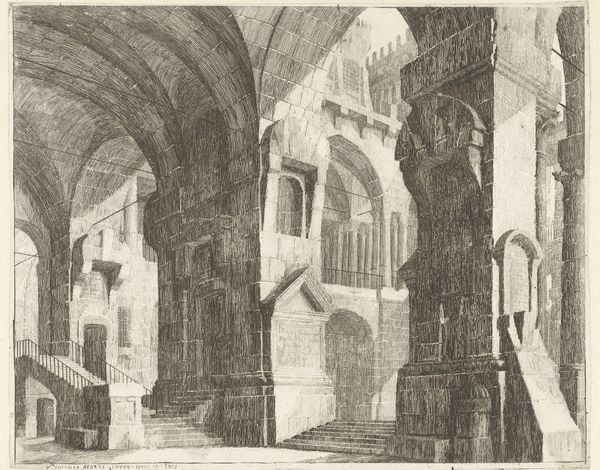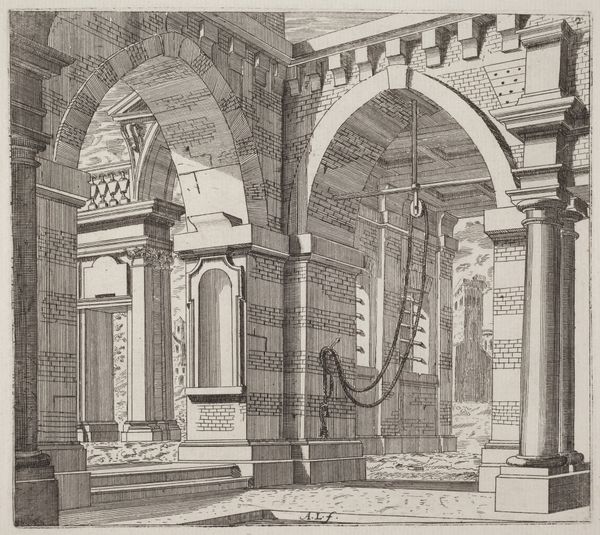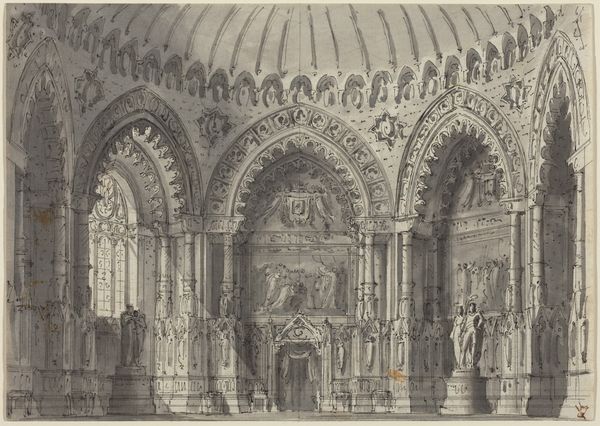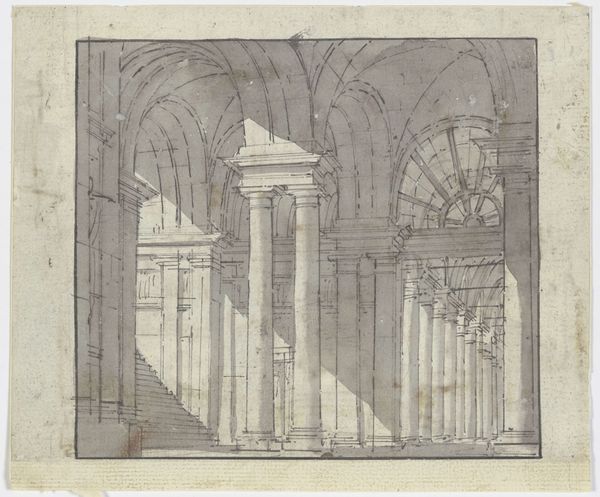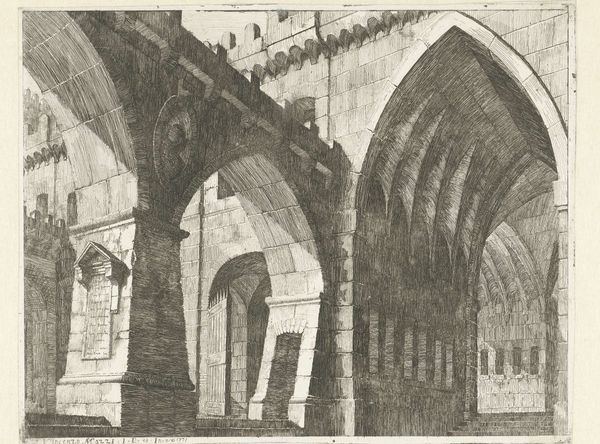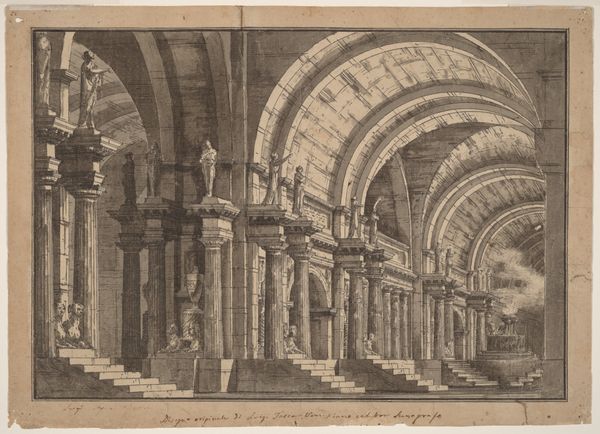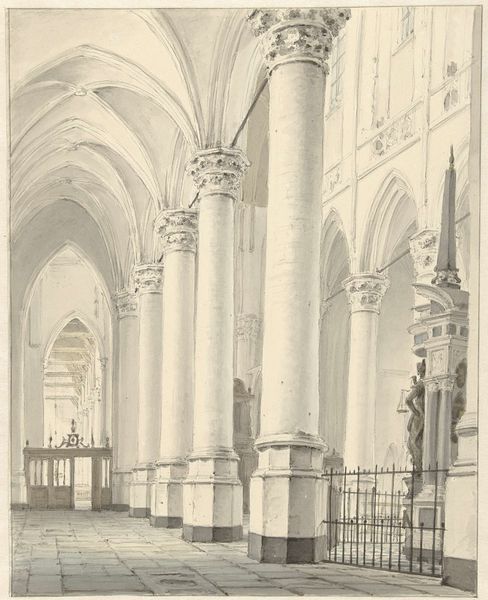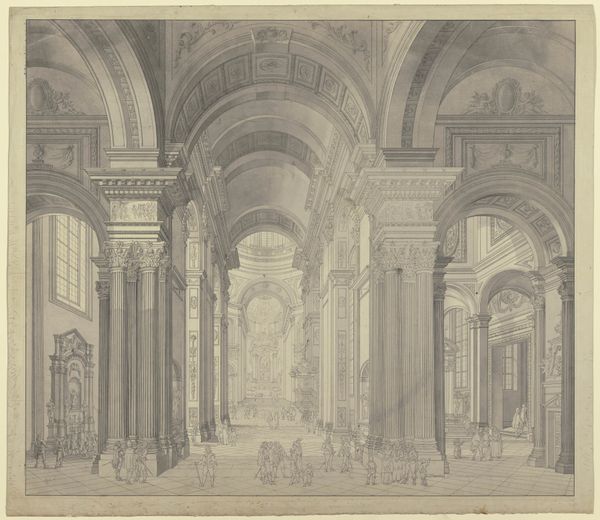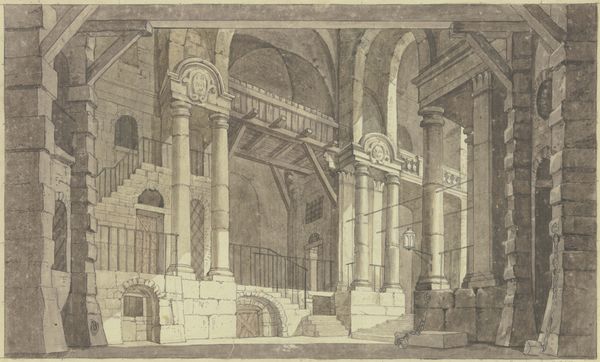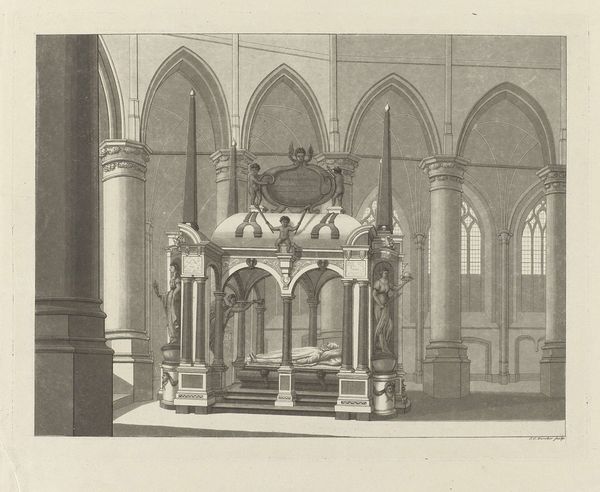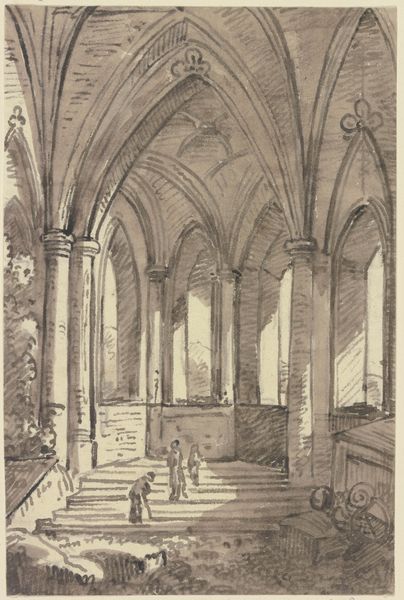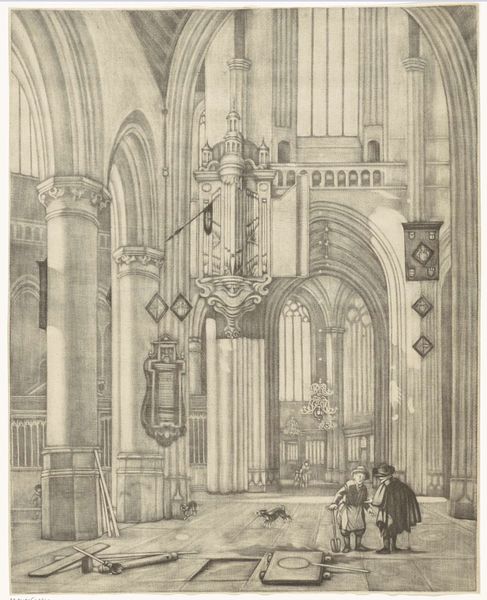
Architectural Fantasy with Buildings, Stairways, and Portals beside a Canal before 1753
0:00
0:00
print, engraving, architecture
#
baroque
# print
#
perspective
#
form
#
line
#
cityscape
#
engraving
#
architecture
Dimensions: plate: 16.2 x 18.3 cm (6 3/8 x 7 3/16 in.) sheet: 23.6 x 34 cm (9 5/16 x 13 3/8 in.)
Copyright: National Gallery of Art: CC0 1.0
Curator: What a wonderfully unsettling image. It feels simultaneously grand and desolate. Editor: Indeed. This is "Architectural Fantasy with Buildings, Stairways, and Portals beside a Canal" by Giuseppe Antonio Landi, made before 1753. Landi employed engraving to construct this intricate cityscape. Curator: An architectural fantasy is an apt description. The rigid linearity creates a fascinatingly sterile utopia. It seems almost like a stage set, devoid of genuine human presence beyond those tiny figures on the bridge. Editor: The socio-political forces in 18th-century Italy absolutely shaped the desire for these imagined architectural spaces. Grand Tour culture, for example, propelled an interest in Italian classicism, fostering a taste for these picturesque renderings of architectural forms and imagined cityscapes. Curator: Precisely. It makes me think about Lefebvre's idea of "representational space"—how the architectural motifs embody ideologies of power and order. The flawless perspective, the sheer scale, suggests an oppressive, almost dystopian regime disguised as enlightenment. What's absent – nature, dissent – speaks volumes. Editor: I see your point about Lefebvre. Thinkers and architects did strive for these utopian visions through idealized city planning, with similar, albeit smaller-scale, structures aimed to create orderly societies. Consider the urban planning initiatives occurring during the same period in European capitals; there was a desire to build these clean, grand urban environments. Curator: A perfect point. And Landi presents this perfectly clean and imposing urban fantasy with so little sign of life, its hollowness rings clearly. The artist provides visual spectacle, but in so doing shows us something rather dead. Editor: It serves as a reminder that art and architecture don't exist in a vacuum, don’t you agree? Their forms carry historical echoes, embodying both dreams of progress and, sometimes, the silent anxieties of their time. Curator: Yes. Thank you for shedding further light on that aspect; it helps unlock some of the visual complexities presented within the print. Editor: And you for prompting us to engage with how social theories allow a contemporary dialogue with 18th-century practices.
Comments
No comments
Be the first to comment and join the conversation on the ultimate creative platform.
